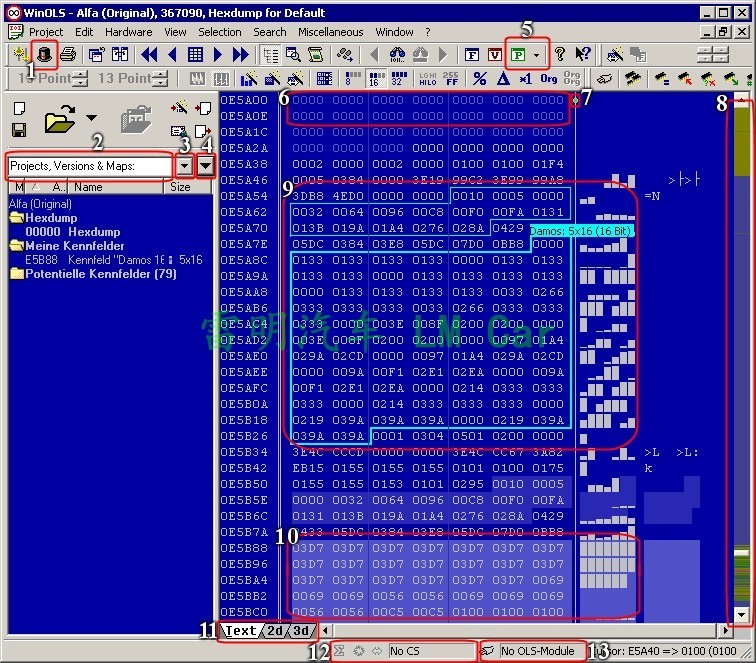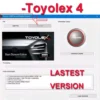Check, Check, Check: The Importance of Checksum in Car ECU Memory 3
In this blog post we will try to understand the importance of checksum in ECU memory.
The Electronic Control Unit (ECU) is a critical component in modern vehicles. It is responsible for managing and controlling various systems, such as engine management, transmission control, and stability control. The ECU relies on a memory system to store data, settings, and configurations that are necessary for its operation. In this post, we will explore the concept of checksum in ECU memory, its importance, and how it works.
What is a checksum?
A checksum is a mathematical function that is used to detect errors or changes in data during transmission or storage. It is a way to ensure data integrity by comparing the calculated checksum value to the expected checksum value. The checksum value is typically a fixed length and is computed using a specific algorithm.
There are various types of checksum algorithms, but they all follow a similar process. The algoritm takes the data to be transmitted or stored and calculates a checksum value using a mathematical formula. The checksum value is then appended to the data and transmitted or stored alongside it. The receiver or the device responsible for reading the data will then calculate its own checksum value using the same algorithm and compare it to the received checksum value. If the two values match, the data is considered valid, and if they do not match, it indicates that an error has occurred.

Why is checksum important in ECU memory?
Data integrity is crucial in the ECU memory system as it stores critical data that is used to control various vehicle systems. The ECU relies on accurate data to make decisions that impact the performance and safety of the vehicle. The use of checksum in ECU memory is essential for several reasons:
- Ensuring accurate data transfer: When data is transferred from one device to another, errors can occur due to various reasons such as electromagnetic interference, noise, or hardware failure. The use of checksum ensures that the data transferred is accurate and has not been corrupted during transmission.
- Detecting and preventing errors: The ECU memory system stores critical data, and any errors in this data can have severe consequences on the vehicle’s performance and safety. The use of checksum helps detect errors in the data and prevents the ECU from making incorrect decisions based on inaccurate data.
In addition to detecting errors, the ECU also has built-in protection mechanisms to prevent the system from starting or operating if a bad checksum is detected. This is because allowing the system to operate with corrupted data could result in serious safety hazards, such as engine failure or loss of control of the vehicle.
When a bad checksum is detected, the ECU may prevent the engine from starting or put the system into a fail-safe mode, which limits the vehicle’s performance and capabilities until the issue is resolved. This ensures that any errors in the system are quickly detected and resolved, preventing potential safety hazards.
ECU manufacturers also implement additional security measures to protect the system from unauthorized access and tampering. This includes encryption of data and code, secure boot processes, and the use of secure communication protocols. These measures ensure that the ECU memory system is protected from malicious attacks and unauthorized modifications, further enhancing the safety and security of modern vehicles.
How is checksum calculated in ECU memory?
The process of calculating checksum in ECU memory involves the following steps:
- Calculation process: The ECU memory system uses a specific algorithm to calculate the checksum value. The algorithm takes the data stored in the memory and calculates the checksum value using a mathematical formula. The resulting checksum value is then stored alongside the data in the memory.
- Verification process: When the ECU retrieves the data from the memory, it calculates its own checksum value using the same algorithm. The ECU then compares the calculated checksum value to the stored checksum value. If the two values match, the data is considered valid, and if they do not match, it indicates that an error has occurred.
- Importance of using the correct algorithm: It is crucial to use the correct checksum algorithm when calculating and verifying checksum values. Using the wrong algorithm can result in incorrect checksum values, leading to data errors and potential vehicle malfunctions.
Examples of ECU checksum algorithms:
There are various checksum algorithms that are commonly used in ECU memory systems. Some of the most popular algorithms include:
- CRC-16: CRC-16 is a cyclic redundancy checksum algorithm that is commonly used in ECU memory systems. It uses a 16-bit checksum value and is known for its high accuracy and reliability.
- Fletcher’s Checksum: Fletcher’s Checksum is a simple checksum algorithm that is commonly used in low-end ECU memory systems. It uses a 16-bit checksm value and is known for its simplicity and efficiency.
- Adler-32: Adler-32 is a 32-bit checksum algorithm that is commonly used in ECU memory systems. It is known for its high speed and efficiency, making it a popular choice for high-end ECU systems.
It is important to note that different manufacturers and ECU systems may use different checksum algorithms. It is crucial to use the correct algorithm when calculating and verifying checksum values to ensure data integrity and prevent errors.
In Conclusion:
The use of checksm in ECU memory is critical for ensuring data integrity and preventing errors. The ECU relies on accurate data to make decisions that impact the performance and safety of the vehicle. The use of checksum helps detect errors in the data and ensures that the ECU makes decisions based on accurate data. There are various checksum algorithms available, and it is important to use the correct algorithm when calculating and verifying checksum values. By understanding the importance of checksum in ECU memory, we can appreciate the complexity of modern vehicle systems and the critical role of the ECU in ensuring their safe and efficient operation.
Overall, checksum is a critical aspect of the ECU memory system that plays a crucial role in ensuring the safe and efficient operation of modern vehicles. It is important for both manufacturers and consumers to understand the importance of checksum and the role it plays in vehicle performance and safety. With the continued advancement of technology and the increasing complexity of vehicle systems, the importance of checksum is only set to grow in the coming years.






well these days most of flashing tool correct checksum on writing so you don’t have to worry about it…
What software can calculate cheksum on Denso ecus ?
Can you explain how to do chksum in WINOLS and is it possible only in original version ?